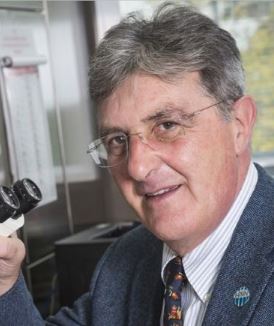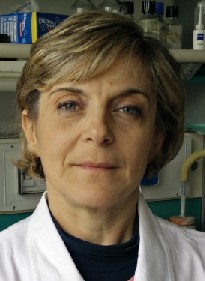Studying at the University of Verona
Here you can find information on the organisational aspects of the Programme, lecture timetables, learning activities and useful contact details for your time at the University, from enrolment to graduation.
Academic calendar
The academic calendar shows the deadlines and scheduled events that are relevant to students, teaching and technical-administrative staff of the University. Public holidays and University closures are also indicated. The academic year normally begins on 1 October each year and ends on 30 September of the following year.
Course calendar
The Academic Calendar sets out the degree programme lecture and exam timetables, as well as the relevant university closure dates..
| Period | From | To |
|---|---|---|
| lez 3 anno 1 semestre TLB | Oct 1, 2015 | Nov 27, 2015 |
| lez 2 anno 1 semestre TLB | Oct 1, 2015 | Nov 27, 2015 |
| lez 1 anno 1 semestre TLB | Oct 5, 2015 | Dec 20, 2015 |
| lez 3 anno 2 semestre TLB | Mar 1, 2016 | Apr 29, 2016 |
| lez 1 anno 2 semestre TLB | Mar 1, 2016 | Apr 29, 2016 |
| lez 2 anno 2 semestre TLB | Mar 1, 2016 | Apr 29, 2016 |
| Session | From | To |
|---|---|---|
| Esami Sess. Inv.le 1 anno TLB | Jan 7, 2016 | Jan 29, 2016 |
| Esami Sess. Inv.le 2 e 3 anno TLB | Feb 2, 2016 | Feb 27, 2016 |
| Esami Sess. Estiva 3 anno TLB | Jul 1, 2016 | Jul 31, 2016 |
| Esami Sess. Estiva 1 e 2 anno TLB | Jul 1, 2016 | Jul 29, 2016 |
| Esami Sess. Autunnale TLB | Sep 1, 2016 | Sep 30, 2016 |
| Session | From | To |
|---|---|---|
| Sessione Autunnale 2016 | Oct 1, 2016 | Nov 30, 2016 |
| Sessione Primaverile | Mar 1, 2017 | Apr 30, 2017 |
| Description | Period | From | To |
|---|---|---|---|
| Tirocini 3 anno TLB | Tirocini 3 anno TLB | Oct 1, 2015 | Mar 31, 2016 |
| Tirocini 2 anno TLB | Tirocini 2 anno TLB | Nov 30, 2015 | Jan 29, 2016 |
| Tirocini 1 anno TLB | Tirocini 1 anno TLB | Feb 1, 2016 | Feb 29, 2016 |
| Tirocini 3 anno TLB 2^ PERIODO | Tirocini 3 anno TLB 2^ PERIODO | Apr 1, 2016 | Sep 30, 2016 |
| Tirocini 2 anno TLB 2^ PERIODO | Tirocini 2 anno TLB 2^ PERIODO | May 2, 2016 | Jun 30, 2016 |
| Tirocini 1 anno TLB 2^ PERIODO | Tirocini 1 anno TLB 2^ PERIODO | May 2, 2016 | Jun 30, 2016 |
Exam calendar
Exam dates and rounds are managed by the relevant Medicine Teaching and Student Services Unit.
To view all the exam sessions available, please use the Exam dashboard on ESSE3.
If you forgot your login details or have problems logging in, please contact the relevant IT HelpDesk, or check the login details recovery web page.
Should you have any doubts or questions, please check the Enrollment FAQs
Academic staff
 valentina.adami@univr.it
valentina.adami@univr.it
 marco.ferdeghini@univr.it
marco.ferdeghini@univr.it
 045 812 47 84 (Segreteria) 045 802 74 89 (Segreteria di Istituto)
045 812 47 84 (Segreteria) 045 802 74 89 (Segreteria di Istituto)
 marina.foroni@univr.it
marina.foroni@univr.it
Mainenti Marta
 guido.martignoni@univr.it
guido.martignoni@univr.it
 maria.murgia@aovr.veneto.it
maria.murgia@aovr.veneto.it
 negrivr@tin.it
negrivr@tin.it
 bruno.sandini@aulss8.veneto.it
bruno.sandini@aulss8.veneto.it
Study Plan
The Study Plan includes all modules, teaching and learning activities that each student will need to undertake during their time at the University.
Please select your Study Plan based on your enrollment year.
1° Year
| Modules | Credits | TAF | SSD |
|---|
2° Year activated in the A.Y. 2016/2017
| Modules | Credits | TAF | SSD |
|---|
3° Year activated in the A.Y. 2017/2018
| Modules | Credits | TAF | SSD |
|---|
| Modules | Credits | TAF | SSD |
|---|
| Modules | Credits | TAF | SSD |
|---|
| Modules | Credits | TAF | SSD |
|---|
Legend | Type of training activity (TTA)
TAF (Type of Educational Activity) All courses and activities are classified into different types of educational activities, indicated by a letter.
Diagnostic Methodologies of Clinical Pathology (2016/2017)
The teaching is organized as follows:
Learning outcomes
------------------------
MM: IMMUNOEMATOLOGIA ED EMOSTASI
------------------------
Provide theoretical knowledge and acquire skills and attitudes to meet the expectations of immunohematology laboratory diagnostic services within the Transfusion Medicine Operations Unit. To this end, the Immunohematology and Hemostasis Module is closely linked to that of Immunohematology Methods and Techniques, which, along with that of Clinical Pathology, is part of the overall teaching of Diagnostic Methodologies of Clinical Pathology.
------------------------
MM: METODI E TECNICHE DI IMMUNOEMATOLOGIA
------------------------
The student will acquire fundamental methods and techniques of Immunohaematology erythrocyte as well as procedures on collection, processing and storage of hemocomponentes
------------------------
MM: PATOLOGIA CLINICA
------------------------
1. Provide some evidence of the role of Laboratory Medicine in the recognition and treatment of human diseases, using "the Cardiovascular Disease" as a model example. 2. Providing tools for the assessment of diagnostic tests accuracy and the evaluation of test results related to the diagnostic questions.
Program
------------------------
MM: IMMUNOEMATOLOGIA ED EMOSTASI
------------------------
- Presentation of course contents: The Organization of a Blood Transfusion Service. Italian and european guidelines and regulations. Characteristics and requirements of the Blood Transfusion Services. - The immune system: immune response to transfusions, biological characteristics and functions of antibodies. Antigen-antibody reaction and agglutination: biological bases. - ABO Blood Group System: biochemistry, genetics and phenotype; ABO blood types and variants. Antibodies directed against ABO blood group antigens: methods to detect these antibodies and clinical significance. - Rh Blood Group System: history and clinical aspects of Rh Blood Group System; molecular bases of Rh antigens, biochemistry. D antigen and other Rh Blood Group System antigens; alloantibodies that recognize D antigen and other Rh antigens. - Erythrocyte Alloimmunization: the main mechanisms involved in the alloimmunization; mechanisms of recognition and presentation of antigen, the primary antibody reaction and the production of high affinity IgG antibodies when antigen rechallenges. Immunogenic properties of the main Blood Group System antigens. - The antiglobulin test (or Coombs’ test): mechanism, direct and indirect antiglobulin tests. The clinical use of these tests in immunohematology and laboratory methods. Antibodies defined as “cold” or “warm”. - Transfusion practice: pre-transfusion testing and selection of blood for transfusion. - Direct antiglobulin Test positive and autoantibodies: clinical significance and management of patients with autoantibodies. - Alloantibodies identification. - Hemolytic disease in the newborn.
------------------------
MM: METODI E TECNICHE DI IMMUNOEMATOLOGIA
------------------------
- Types of donations: aspirant donor and periodic donor, - sampling collection method: whole blood and in apheresis , - critical points in the collection phase, - mandatory exams, - processing and production of hemocomponentes of first and second level (filtered red blood cells, washed, irradiated, ABC plasma category ), production of platelet concentrates from buffy coat, - blood components storage conditions, characteristics of the blood bank refrigerators - freezers and incubators of platelets, - mode of transport of blood components, - quality control on blood components products, - Immunohaematology: the agglutination reaction, determining blood groups , research irregular antibodies, type and screen, indirect antiglobulin test, direct antiglobulin test, - hemolytic disease of the newborn, - autoimmune hemolytic disease, ham test, sugar test, -types of errors in the pre-analytical, analytical and post-analytical system, quality system, - verification of intern validity, verification of external validity
------------------------
MM: PATOLOGIA CLINICA
------------------------
CARDIOVASCULAR DISEASE atherosclerosis pathogenesis physiopathology epidemiology Risk - Prevention Lipids and factors measurable in the laboratory Risk Guide lines ESC 2016 OBESITY AND DIABETES Epidemiology of obesity and diabetes Classification of diabetes Diagnosis and monitoring of diabetes Laboratory Evaluation of micro and macroangiopatica disease HYPERTENSION Definition Physiopathology Laboratoryrole role in: Risk assessment Secondary forms Diagnosis Evaluation of organ damage MARKER OF MYOCARDIAL INJURY Myocardial infarction Pre-troponins markers Troponins and diagnosis of AMI DIAGNOSTICS ACCURACY: Sensitivity, specificity, predictive value, likelihood ratio, ROC curve Prevalence, pre-test probability and predictive value of a diagnostic test.
Examination Methods
------------------------
MM: IMMUNOEMATOLOGIA ED EMOSTASI
------------------------
Written test, multiple-choice, multiple oral exam. The IMMUNOEMATOLOGY AND EMOSTASI modules and IMMUNOEMATOLOGY METHODS AND TECHNIQUES determine 32 questions about the 40 overall written exams of the entire course of "Diagnostic Methodologies of Clinical Pathology". The evaluation of the examination is complete and integrates the three modules (IMMUNOEMATOLOGY AND EMOSTASES, METHODS AND TECHNIQUES OF IMMUNOMATOLOGY, CLINICAL PATHOLOGY) as well as the result of oral examination. Written questions will be reviewed immediately, during the oral test, with at least 30/40 (75%) correct written answers.
------------------------
MM: METODI E TECNICHE DI IMMUNOEMATOLOGIA
------------------------
Written exam with multiple choice questions + interview
------------------------
MM: PATOLOGIA CLINICA
------------------------
Multiple choice test plus oral examination. The CLINICAL PATHOLOGY Module determines 8 about the 40 overall questions of the entire course of "Diagnostic Methodologies of Clinical Pathology". The evaluation of the examination consider all the 40 questions, regarding the three modules (IMMUNOEMATOLOGY AND EMOSTASES, METHODS AND TECHNOLOGIES OF IMMUNOATHMOLOGY, CLINICAL PATHOLOGY). At least 30 out of 40 correct answers are necessary to be admitted to the oral exam. Written questions will be reviewed immediately together with the candidate during the oral test.
Career prospects
Module/Programme news
News for students
There you will find information, resources and services useful during your time at the University (Student’s exam record, your study plan on ESSE3, Distance Learning courses, university email account, office forms, administrative procedures, etc.). You can log into MyUnivr with your GIA login details: only in this way will you be able to receive notification of all the notices from your teachers and your secretariat via email and soon also via the Univr app.
Gestione carriere
Risultati di apprendimento attesi
Orario Lezioni
Si pubblicano gli orari definitivi delle lezioni relativi al 2° semestre dell'A.A. 2023/2024:
La frequenza in aula delle lezioni è obbligatoria ed è prevista per tutti e tre gli anni di corso.
1 ANNO: Aula B lente se non diversamente indicato
2-3 anno Aula F biologici
Documents
| Title | Info File |
|---|---|
|
|
pdf, it, 35 KB, 26/09/23 |
|
|
pdf, it, 32 KB, 22/02/24 |
|
|
pdf, it, 31 KB, 29/09/23 |
|
|
pdf, it, 33 KB, 27/02/24 |
|
|
pdf, it, 28 KB, 28/09/23 |
|
|
pdf, it, 28 KB, 22/02/24 |
Documenti utili
In questa pagina è inserita la guida che detta istruzioni per i casi di infortunio durante le attività di tirocinio con la modulistica da compilare.
Una volta compilata la modulistica questa va consegnata all'Unità operativa Servizi Logistici dell'Università di Verona.
Documents
| Title | Info File |
|---|---|
|
|
pdf, it, 948 KB, 10/12/21 |
|
|
msword, it, 46 KB, 10/12/21 |
|
|
pdf, it, 527 KB, 10/12/21 |
|
|
pdf, it, 164 KB, 10/12/21 |
|
|
pdf, it, 1252 KB, 12/03/24 |
|
|
msword, it, 148 KB, 10/12/21 |
Calendario Esami
in questa pagina verranno pubblicati i calendari degli esami del Corso di Laurea.
Documents
| Title | Info File |
|---|---|
|
|
pdf, it, 51 KB, 05/12/23 |
|
|
pdf, it, 52 KB, 11/12/23 |
|
|
pdf, it, 51 KB, 11/01/24 |
|
|
pdf, it, 47 KB, 11/01/24 |
|
|
pdf, it, 49 KB, 11/12/23 |
Documents
| Title | Info File |
|---|---|
|
|
msword, it, 50 KB, 09/12/21 |
|
|
octet-stream, it, 107 KB, 09/12/21 |
|
|
pdf, it, 948 KB, 09/12/21 |
|
|
pdf, it, 527 KB, 09/12/21 |
|
|
octet-stream, it, 61 KB, 09/12/21 |
|
|
pdf, it, 164 KB, 09/12/21 |
|
|
msword, it, 98 KB, 09/12/21 |
|
|
msword, it, 148 KB, 09/12/21 |
Student login and resources
Attività a scelta dello studente
in questa pagina vengono pubblicati i calendari dei seminari e delle attività a scelta dello studente che il corso propone agli studenti immatricolati con gli aggiornamenti delle attività didattiche che di volta in volta vengono programmate e rese disponibili
Documents
| Title | Info File |
|---|---|
|
|
pdf, it, 100 KB, 12/04/24 |
|
|
pdf, it, 128 KB, 05/04/24 |
































